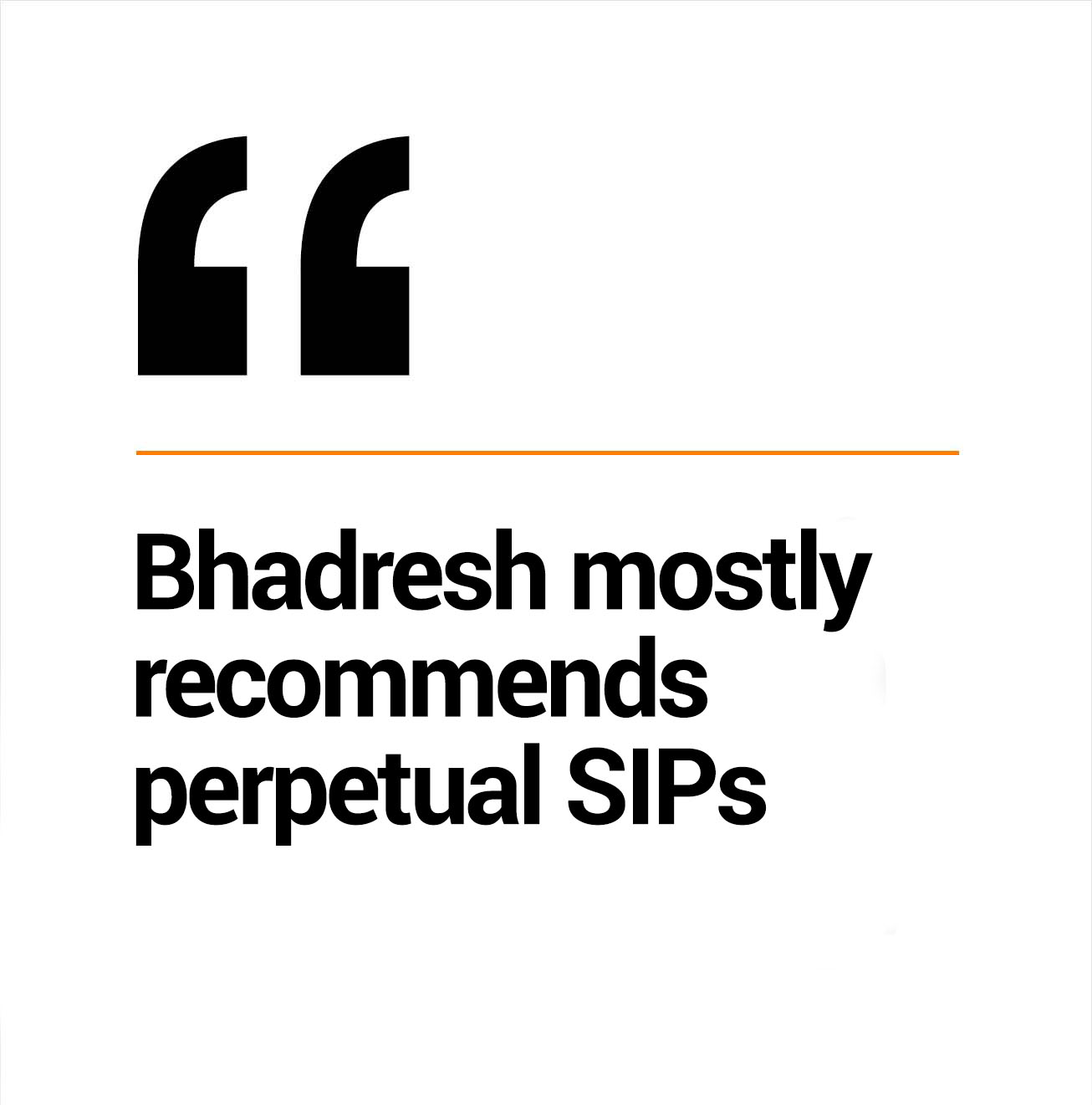Thanks to distributors and AMCs consistent effort, the MF industry today has close to 1 crore live SIP accounts. We all know the benefits of SIP. It is a win-win for both investors as well as distributors. While investors benefit from spreading out investments thereby mitigating volatility over long term, distributors also benefit from sustained increase in their assets under advice.
A majority of the 1 crore SIP accounts are serviced by IFAs. According to rough industry estimates, IFAs command more than 46% market share of the industry SIP count.
Let’s look at how IFAs are championing the cause of SIP among investors.
We caught up with one such IFA, Bhadresh Jhaveri from Vadodara who has 5,500 live SIP accounts to know how he built his large SIP base.
Back in 1987, Bhadresh started selling postal schemes during his college days to support his family. The founder of Jhaveri Securities, Bhadresh forayed in mutual funds in 2000, when the deposit rates were at 11%-12%.
He realized the true advantages of mutual funds when the interest rates started going down and only investing in traditional deposits did not make much investment sense. To provide better alternatives which could be more effective & and also beat inflation, Bhadresh started recommending mutual funds to his clients. Since his investors had a preference for safe products, he on-boarded them into the MF category with products like monthly income plans. Once his clients were comfortable with MFs and experienced the risk-return trade off, Bhadresh transitioned them to balanced funds. As interest rates started going down further, he started recommending SIPs in equity funds. “My clients have made good returns from SIPs in equity funds as the interest rates moved down,” recalls Bhadresh.
Though his journey started from dealing in postal schemes, corporate fixed deposits and stock broking, Bhadresh’s main focus now, is growing his mutual fund business. Bhadresh commands an AUA of Rs. 375 crore in MFs and SIP book of Rs. 1.50 crore. He plans to double his SIP book in 2016. To reach his target, he plans to tap his existing investors who are dealing in direct equity.
Bhadresh has around 45,000 active demat account holders. When asked how he will convince his clients to migrate from direct equity to MFs, he says that he will educate them about goal-based investing. “Goal-based investing helps investors allocate the right amount of money required in the right asset class. By following this approach, they will invest to reach a goal rather than chase returns,” observes Bhadresh.
Focusing on goal-based approach has not just helped him in getting new clients but also helped him increase his ticket size.
While this sounds easy, the main challenge for Bhadresh will be to change the mindset of direct equity investors to not look at MF returns on a day-to-day basis. He has to transform them from being traders to long term investors. “This is where goal orientation will help. Once they realize that meeting life goals through financial investments is important, their focus will shift from tracking stock prices to tracking how close they are to fulfilling their life goals,” believes Bhadresh.
Convincing clients to re-start their SIPs when the tenure ends can be a time consuming pit-stop in their journey to achieving their goals. To address this effectively, Bhadresh mostly recommends perpetual SIPs, so the investment continues uninterrupted while avoiding any unnecessary intervention in terms of repeat paper work.
As far as fund selection is concerned, Bhadresh follows a top-down approach. He first looks at the macro economic situation, valuations and shortlists funds which can do well in future. Past performance is of little importance to him. “There is no guarantee that a good performing fund will continue to do well in future. Thus, I look at the broader picture and try to figure out which type of funds will do well,” explains Bhadresh. Finally, he ascertains the risk profile of investors and recommends schemes accordingly.
Bhadresh says that his clients invest only 3-4% of their investable corpus in direct equities and the remaining is parked in traditional avenues which are considered safe, such as recurring deposits, savings account and others. To on-board them into mutual funds, he plans to introduce them to liquid funds. Further, Bhadresh believes that fixed income is a largely untapped opportunity by IFAs. “A majority of distributors are currently selling equity to clients. So there is less competition in this space which will help me build a good client base. I aim to introduce liquid funds to my clients who have never invested in mutual funds. Once they understand MFs completely and are willing to take risk, I’ll move them to debt funds and finally to equity funds through SIPs,” says Bhadresh.
The good thing about his clients is that a majority of them are comfortable with technology since they have been dealing in shares. A majority of his clients use online platforms provided by NSE and BSE to invest in mutual funds. Bhadresh says that technology will play a big role in migrating his clients from FDs to liquid funds. “I will use the SMS and online transaction facility provided by fund houses and exchanges to help investor’s park money in liquid funds. Technology will help me build scale and volume,” believes Bhadresh.
To address his large customer base, Bhadresh has provided online access to all his clients to view their portfolios. He also meets his clients on a regular basis to review their progress and understand their changing goals and aspirations.
Bhadresh is of the view that the number of unique SIP investors in industry would not be large considering the fact that each investor tends to have 4-5 SIPs. While the SIP accounts of the industry is close to reaching 1 crore, Bhadresh feels that more needs to be done to promote SIPs among masses.
We wish Bhadresh great success in his endeavor to take mutual funds across to the people at large.







